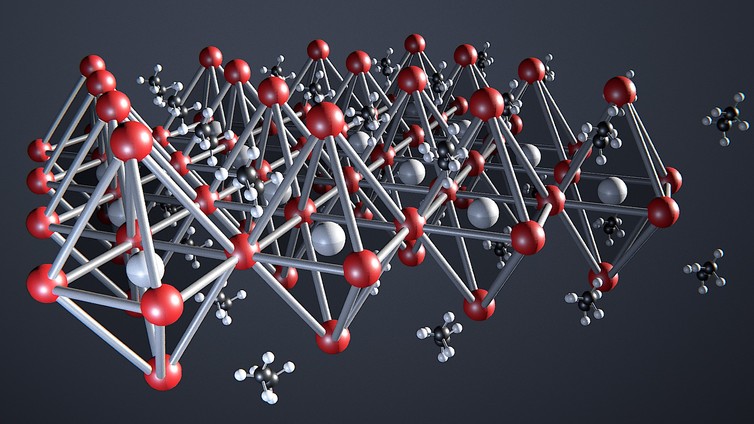[ACS Nano] Efficient Blue Electroluminescence Using Quantum-Confined Two-Dimensional Perovskites
Layer-controlled 2D hybrid perovskites were synthesized for the first time, enabling blue LEDs. This might be the ultimate solution of low-cost, large-area light sources.

Molecular model of monolayer 2D perovskites (Image credit: external pageElton Santos And Andrew Beckinsale)call_made
Solution-processed hybrid organic-inorganic lead halide perovskites are emerging as one of the most promising candidates for low-cost light emitting diodes (LEDs). However, due to a small exciton binding energy, it is not yet possible to achieve an efficient electroluminescence within the blue wavelength region at room temperature, as is necessary for full-spectrum light sources. Here, we demonstrate efficient blue LEDs based on the colloidal, quantum-confined 2D perovskites, with precisely controlled stacking down to one-unit-cell thickness (n = 1). A variety of low-k organic host compounds are used to disperse the 2D perovskites, effectively creating a matrix of the dielectric quantum wells, which significantly boosts the exciton binding energy by the dielectric confinement effect. Through the Förster resonance energy transfer, the excitons down-convert and recombine radiatively in the 2D perovskites. We report room-temperature pure green (n = 7-10), sky blue (n = 5), pure blue (n = 3), and deep blue (n = 1) electroluminescence, with record-high external quantum efficiencies, representing an enhancement by factors of 101 – 103, compared to those reported among the perovskite LEDs in the green-to-blue wavelength region.
